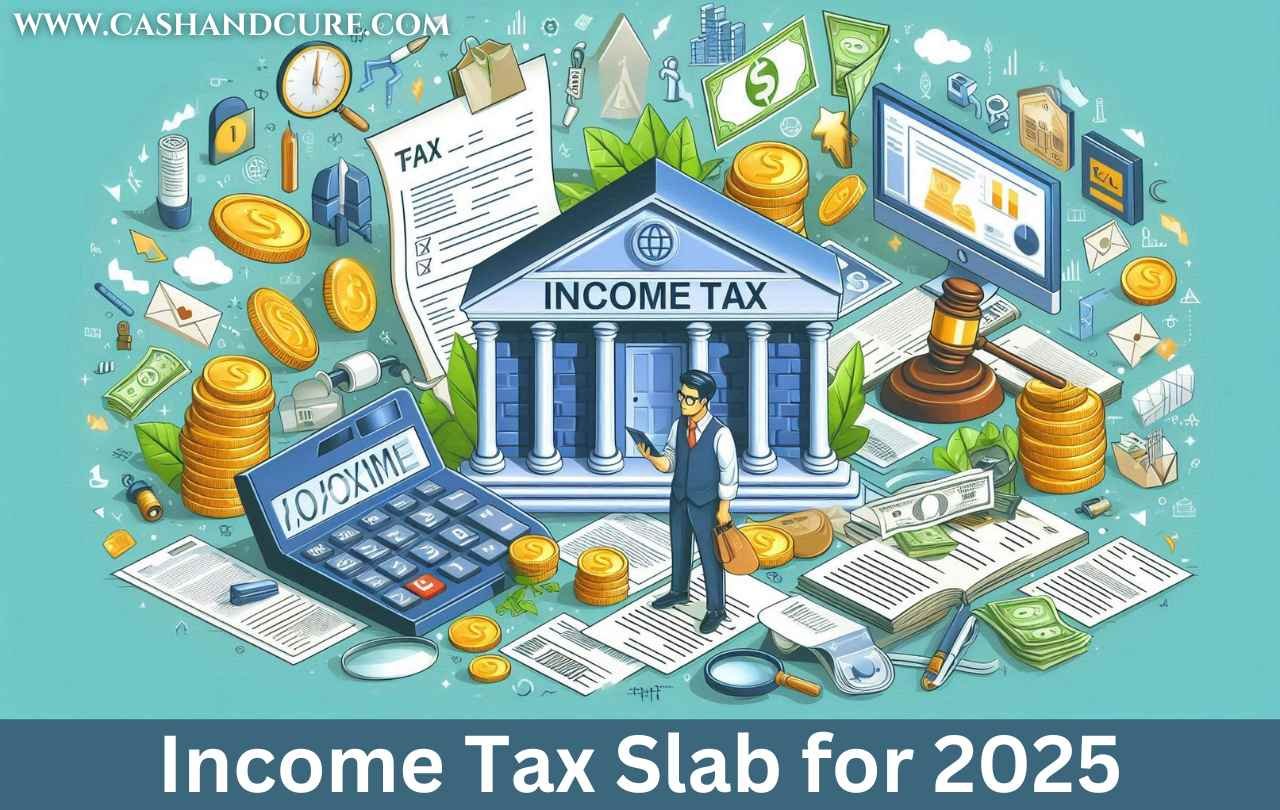Income Tax Slab for 2025: India follows a progressive taxation system, meaning individuals are taxed based on their income level. The income tax slab defines the tax rates applicable to various income brackets, ensuring that higher earners contribute a larger share of taxes compared to low-income individuals.
For the financial year 2024-25 (Assessment Year 2025-26), the income tax slabs are applicable under two regimes:
- Old Tax Regime: Offers deductions and exemptions.
- New Tax Regime: Features lower tax rates but limits exemptions and deductions.
Income Tax Slab for 2025 (New Tax Regime)
The new tax regime introduced in 2020 has undergone several updates to make it more attractive for taxpayers. For FY 2024-25, here’s how the slabs look under the new regime:
| Income Range | Tax Rate |
|---|---|
| Up to Rs.3,00,000 | Nil |
| Rs.3,00,001 to Rs.6,00,000 | 5% |
| Rs.6,00,001 to Rs.9,00,000 | 10% |
| Rs.9,00,001 to Rs.12,00,000 | 15% |
| Rs.12,00,001 to Rs.15,00,000 | 20% |
| Above Rs.15,00,000 | 30% |
Key Highlights:
- Standard Deduction of Rs.50,000 is now available under the new tax regime.
- The new regime is the default tax regime; however, taxpayers can opt for the old regime if they find it more beneficial.
Income Tax Slab for 2025 (Old Tax Regime)
The old tax regime allows taxpayers to claim exemptions and deductions such as HRA, LTA, and Section 80C investments. Here are the slabs for FY 2024-25 under the old regime:
| Income Range | Tax Rate |
|---|---|
| Up to Rs.2,50,000 | Nil |
| Rs.2,50,001 to Rs.5,00,000 | 5% |
| Rs.5,00,001 to Rs.10,00,000 | 20% |
| Above Rs.10,00,000 | 30% |
Additional Points:
- Individuals aged 60-80 years (senior* citizens) enjoy a higher exemption limit of Rs.3,00,000.
- For individuals above 80 years (super senior* citizens), the exemption limit is Rs.5,00,000.
Old vs. New Tax Regime: Which One Should You Choose?
Choosing between the old and new tax regimes depends on your income structure, expenses, and investments.
Benefits of the New Tax Regime:
- Lower tax rates for higher income brackets.
- Simplified tax filing process.
- Ideal for those with fewer investments and exemptions.
Benefits of the Old Tax Regime:
- Suitable for individuals with significant deductions such as HRA, Section 80C investments, and medical expenses.
- Provides flexibility in tax planning.
Quick Tip:
Calculate your tax liability under both regimes to determine which one benefits you the most. Tools like online tax calculators can simplify this process.
Tax-Saving Tips for FY 2024-25
Even with the new tax slabs, effective tax planning can help reduce your tax liability. Here are some actionable tips:
- Utilize Section 80C Deductions (Old Regime):
- Maximum deduction: Rs.1,50,000.
- Eligible investments: PPF, ELSS, NSC, tax-saving FDs, and life insurance premiums.
- Claim Standard Deduction:
- A standard deduction of Rs.50,000 is available under both regimes.
- Invest in NPS (Section 80CCD):
- Additional deduction of Rs.50,000 for contributions to the National Pension System.
- Tax Benefits on Home Loans:
- Deduction of up to Rs.2,00,000 on home loan interest under Section 24(b).
- Health Insurance Premiums (Section 80D):
- Deduction of up to Rs.25,000 for individuals and Rs.50,000 for senior* citizens.
- Charitable Contributions (Section 80G):
- Donations to approved charitable organizations qualify for deductions.
Key Changes in Income Tax for FY 2024-25
- Standard Deduction in the New Regime:
For the first time, a standard deduction of Rs.50,000 is allowed in the new tax regime, making it more appealing for salaried individuals. - Tax Rebate Limit Increased:
Under Section 87A, individuals earning up to Rs.7,00,000 annually are eligible for a full tax rebate under the new regime, effectively making their tax liability zero. - Focus on Digital Filing:
The Income Tax Department encourages e-filing and pre-filled ITR forms, making tax compliance faster and error-free.


Leave a Reply
You must be logged in to post a comment.